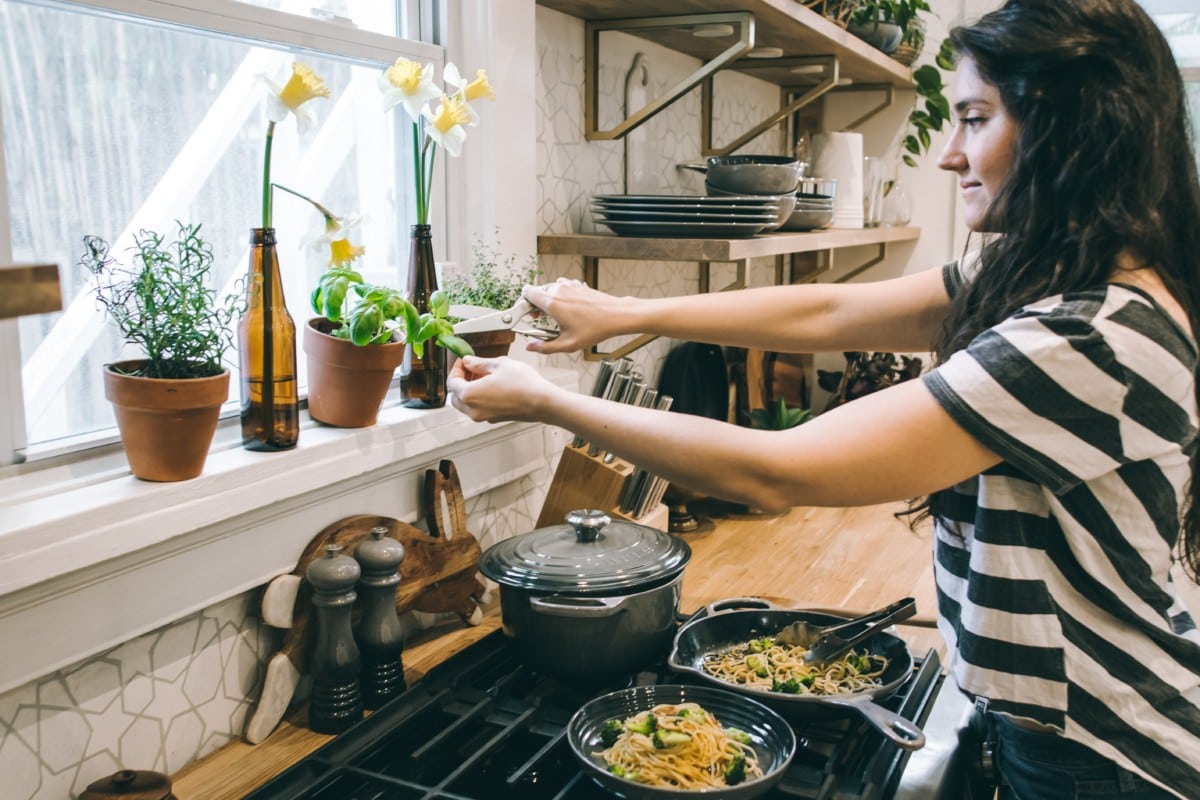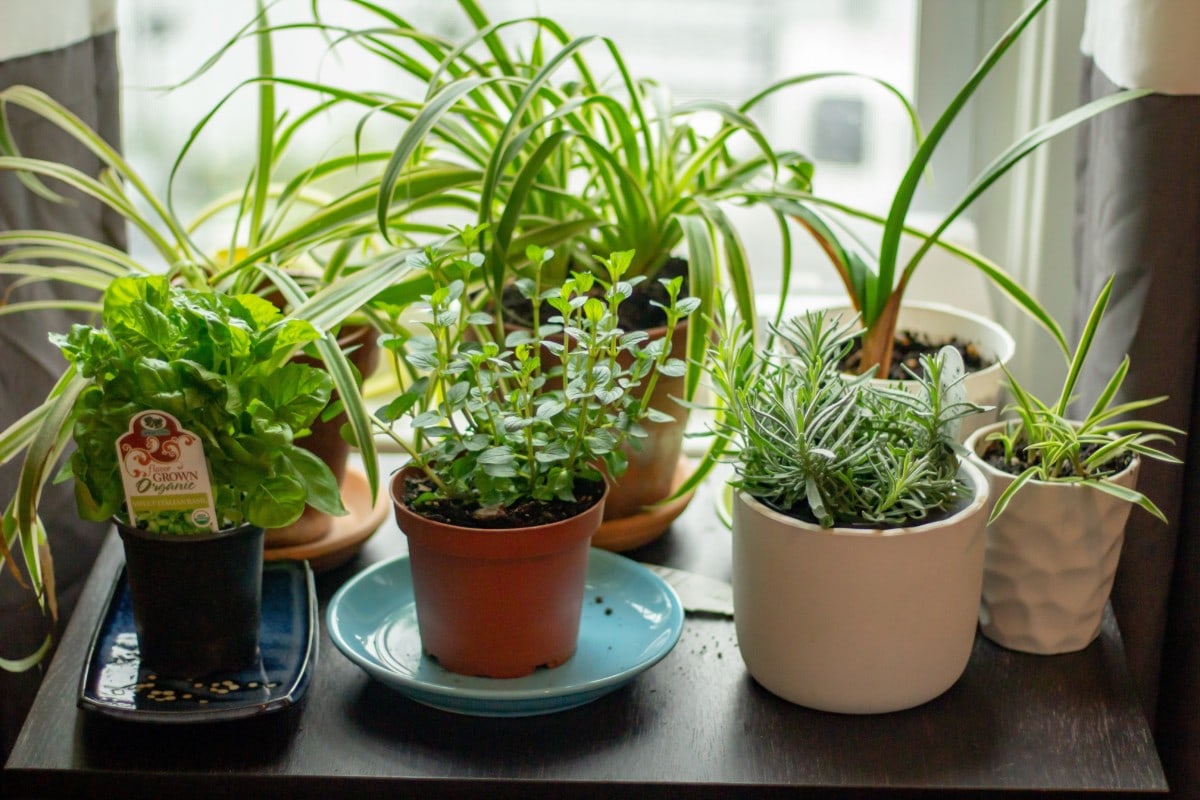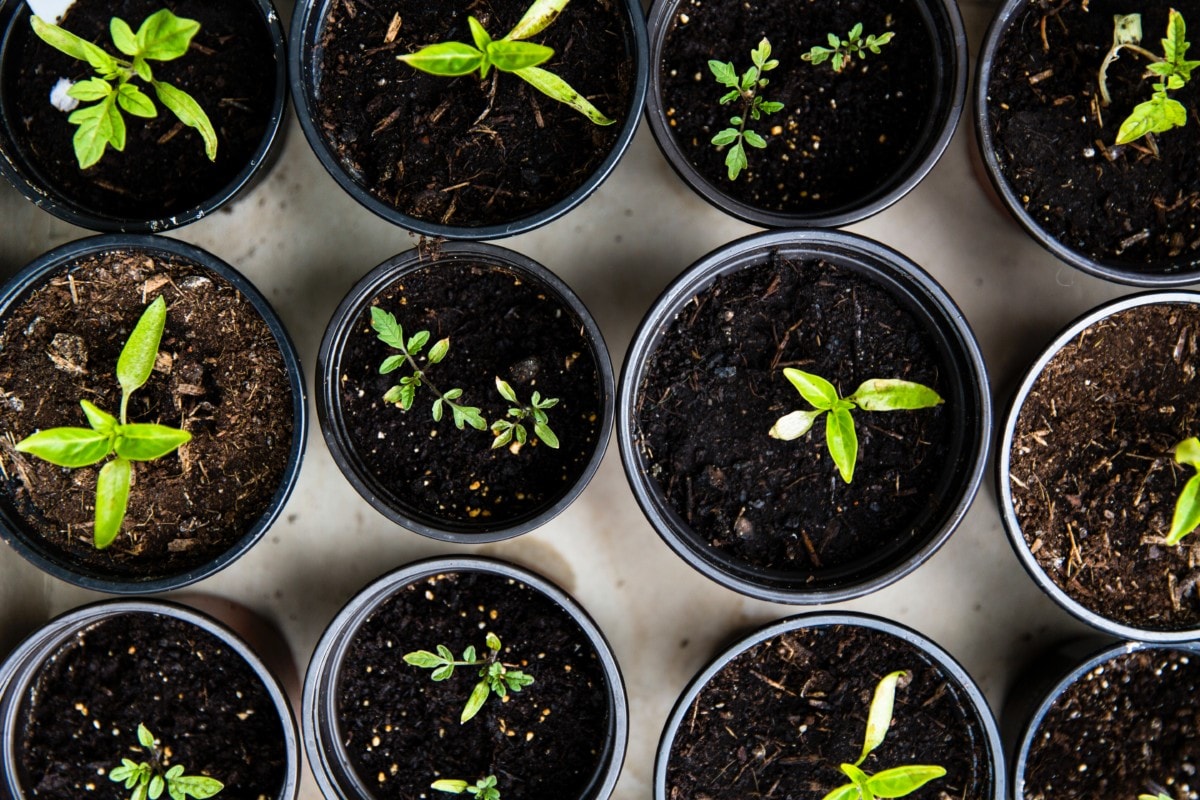Creating an indoor herb garden can be one of the most fulfilling and cost-effective ways to have fresh herbs on hand year-round. While backyard gardens are great, they limit your growing season to the summer months and buying your herbs at the grocery store often leaves you with far more than you need at a single time. That’s why we reached out to the experts in home gardening from Vancouver to Miami to provide you with some tips for creating a plentiful indoor herb garden. So, sit back and learn how you can bring the beauty of an outdoor garden into your home for fresh herbs all year.

Start with the right herbs
Choosing the right herbs for your indoor garden is key. You’ll get a lot more use out of herbs if you are familiar with them, and if you use them often. If you love a good pasta sauce, consider growing oregano, rosemary and basil. More of an herbal tea fan? Try chamomile, peppermint and stevia. – Village Sage Herbals
Herbs are perfect indoors for a sunny window or nook and will add delicious fragrances inside the home. These garden plants can have the same appeal as houseplants, and those trimmings can go right into the evening meal. Design-wise – vary leaf colors and shapes with colorful herbs like golden marjoram, opal basil, tricolor sage, chives, and French thyme. Or just plant your favorites. With bright light, regular watering, and an occasional haircut, why not bring part of the culinary garden inside? – Steve Harbour Landscapes
Light is key
If you’re lucky enough to have a south-facing (for northern hemisphere) windowsill that will fit pots, place the herbs right in the sill. If you don’t have a nice wide south-facing sill, I highly recommend growing lights. Herbs need a lot of light to thrive. There are so many aesthetic options nowadays including those by Modern Sprout and Soltech Solutions. A few other simple options are available here. Providing abundant light will help your indoor garden thrive! Lastly, place them somewhere you’ll see them every day so you don’t forget to check on them. Most herbs don’t like to dry out, so be sure to water when the topsoil is dry. Happy growing! – Work Hard, Plant Hard
Grow what you use
Be sure to grow herbs that you use often in recipes, as most herbs benefit from regular harvesting. Use drip trays under all containers and periodically empty them so that you don’t get mildew and mold issues in your house. Make sure to space your herb plants out to allow adequate airflow around them. Supplement any natural lighting your herbs get with an LED desk lamp on a timer, left on for about 12 hours a day. Happy growing! – Healthy Fresh Homegrown by Tranquil Urban Homestead
Take advantage of plant propagation
One of my most favorite and gratifying ways to create an abundance of herbs in the garden is through the natural action of plant propagation. You can easily take cuttings of perennial herbs like oregano, lavender, and chamomile to grow a new plant. Strip off a few of the lower leaves on a flexible stem, place the cutting in a container of soil in the shade, water in, and roots will form in a couple of weeks. And just like that, you have a brand new herb to use for culinary and medicinal use! – The Food Tree Holistic Nutrition

Make it accessible
Besides creating ideal growing conditions (think Sun, Soil, and Water) the most important consideration for an herb garden is accessibility! Choose a location that will be easy to access when you are deep in a kitchen project and need fresh herbs ASAP! Most culinary herbs are perennials (rosemary, sage, oregano, thyme, mint, tarragon), meaning that one plant will grow and produce for many years. A few herbs, however, are annuals (dill, parsley, cilantro, and basil) and will need to be planted again each year. Cilantro and dill, in particular, are very heat sensitive and quick to “bolt”, so these herbs will need to be planted several times throughout the year (aka “succession planting”) in order to provide a continuous harvest. – Portland Edible Gardens
Pick a proper planter
You can grow an herb garden in a variety of locations. Everyone can be a “farmer” in their backyard, on a roof, patio, wall, with a window box, in beautiful pots or containers. Your imagination, creativity and light source will serve as your best guide for figuring out where to start your unique garden. Check out this resource video to learn more about Urban Gardening. – See Jane Explore
Try something new
Don’t make growing herbs indoors any harder than it has to be. The easiest way to start is by cutting off the roots of store-bought green onions and putting them into a jar of water. I’ve had more success this way than from planting into soil, and they seem to grow faster, too! – Wraxly

Choose the proper planter
You can grow an herb garden in a variety of locations. Everyone can be a “farmer” in their backyard, on a roof, patio, wall, with a window box, in beautiful pots or containers. Your imagination, creativity and light source will serve as your best guide for figuring out where to start your unique garden. Check out this resource video to learn more about Urban Gardening. – See Jane Explore
Don’t get discouraged
Don’t let past failures or fear of trying something new stop you from growing herbs indoors. The rewards are many and you will learn so much from your successes as well as failures, I do. And once you begin harvesting fresh herbs and tasting the difference in your meals you will be hooked and looking for more sunny windows or adding artificial lights to expand your growing options. – Melinda Myers

 United States
United States Canada
Canada